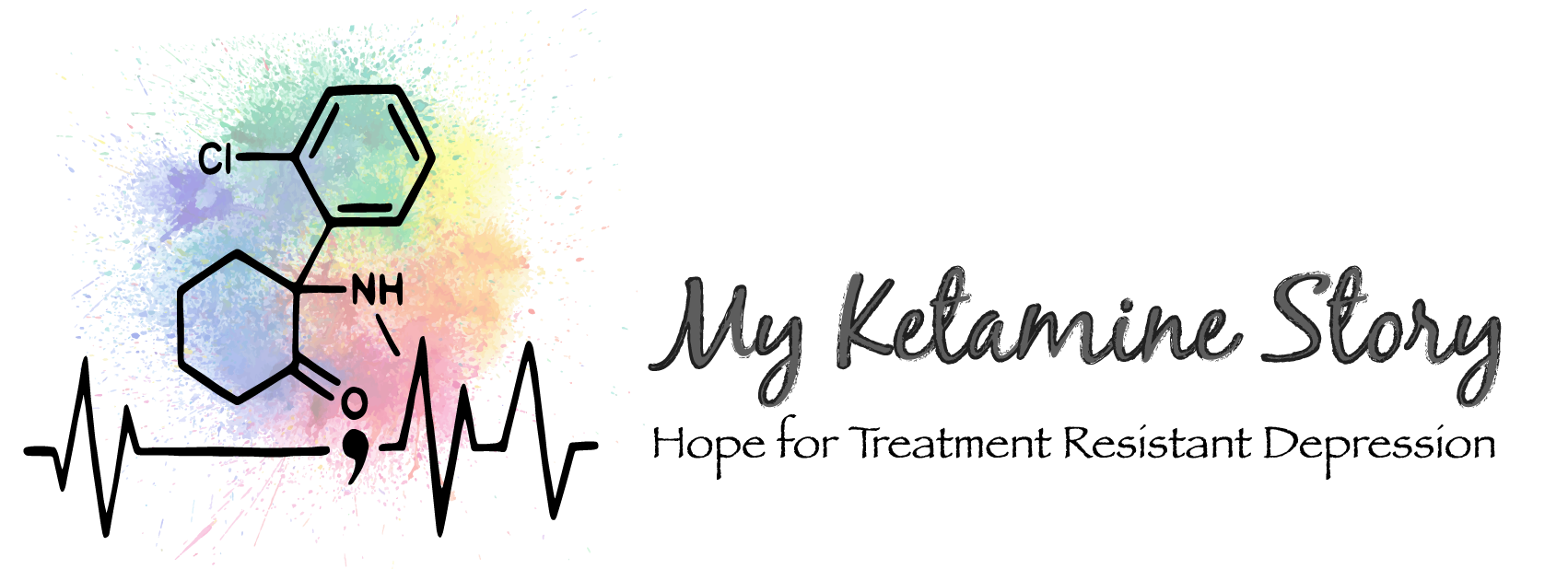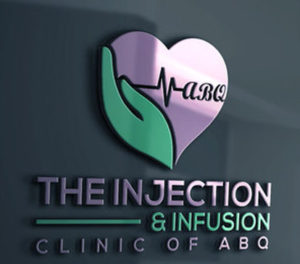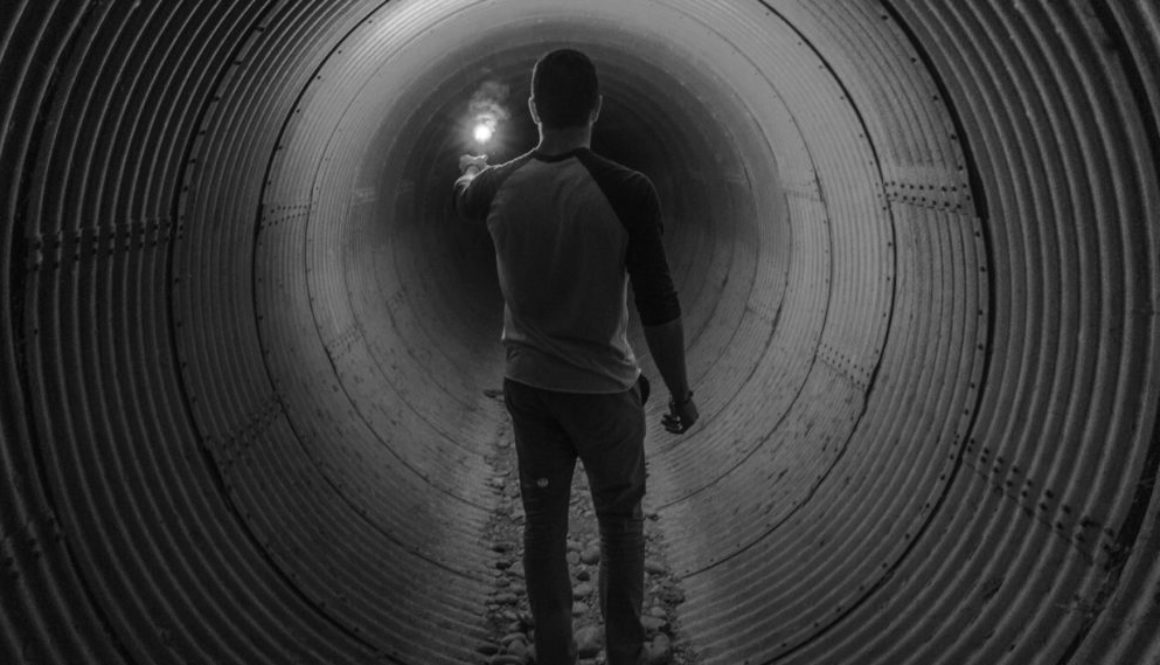Ketamine, a Brighter Future for Those in Darkness
Hello and Welcome. This is Susan from myketaminestory.com. I wanted to take another moment to explain to you how involved my family became in order to pull me from my despair. My son Matthew was a freshman at Virginia Commonwealth University when Ketamine was first spoken of in our home. Matthew was taking a research class at the time and decided to write his semester paper on Ketamine. He was then invited to present his finding at the Undergraduate Research Opportunities Program’s yearly presentations. It was all so exciting and fascinating. Matthew’s research paper was accessible online for a year or more, I believe. I am a very proud mom! He received an A+ for the class.
Matthew’s professor was very impressed with Matthew’s topic and enthusiasm. Matthew wrote his paper during the same period of time as my first set of Ketamine infusions. I returned to Virginia after my first 3 treatments for the weekend, and Matthew interviewed me for his paper. If anyone is interested I have linked his rough draft of the interview. Matthew incorporated some of the interview into his research. He also had to include a poster summarizing his findings for the UROP presentation.
This project was beneficial for the whole family. We are all doing our part to try and change a flawed medical system. We know how Ketamine changed our lives and we want to shout it off the rooftops in order to bring attention to the drug and its potential life saving abilities.
I have high hopes that by posting his research paper on my website maybe more people will read this informative paper. Matthew did an amazing job capturing how Ketamine could be the way out of the darkness. It definitely lifted me up into the light.
Ketamine, a Brighter Future for Those in Darkness
Matthew Gayhart
University 200, 2:00
Professor Boaz
April 16, 2015
Millions of people around the world suffer from Major Depressive Disorder, and many of these people are given drugs to help treat this potentially devastating disease. For many, the first treatment is successful, and if not, certainly the second treatment gives them the relief they so desperately need. Others, however, are not so lucky, people with treatment resistant depression undergo numerous treatments, some of which are more aggressive than others, but still nothing helps alleviate their depression. Recently an older anesthetic, the drug Ketamine, has been making some news as a new depression treatment. This paper will compare Ketamine to the traditional approved methods for treating depression, as well as discuss the next steps in making this drug more widely available. By reviewing scholarship on the subject of antidepressants, as well as available research on Ketamine, and by interviewing a patient who recently underwent a Ketamine treatment, this research highlights the positive results of Ketamine while acknowledging the setbacks that still currently exist, and advocates for the use of Ketamine as a treatment for depression. While more research is required, Ketamine is poised to revolutionize depression treatment and needs to be more accessible to those who so desperately need saving.
Ketamine seems like a very specific drug, that most people have not heard about, and that is very true. This is not something that was drawn out of a hat, the fascination and drive to inform as many people as possible comes from a very personal place. Watching someone suffer your whole life would motivate anyone, and I have seen my fair share of suffering.
I stand in shock and uncertainty as I watch my mother stagger across the kitchen and pick up a pot of boiling water. Moving around the island, where the pot had recently been bubbling away atop the flames from the stove, I walk with her to go to the sink, hoping to be of some help and possibly stop her from handling the hot liquid. We reach the sink together, all the while we are steeped in an eerie silence, laying like a blanket across the kitchen. The only sound I can hear is my heartbeat thundering in my ears. We stand for a moment at the sink, my mother is not looking very steady on her feet, swaying slightly, as if there were a slight breeze that moved only her. I can feel the fear rising in my chest, its icy hand clawing at my stomach, I decide to ask her if I could take the pot and make the tea for her. I do not want her to be pouring the boiling water out of the pot and into the little travel coffee cups that we use for our tea. I can not tell my mother this, for I do not want to hurt her feelings or make her think I did not believe in her, as in her mind she was completely normal. I also could not tell her that in my 10 years on this earth I had never poured my own water for tea, and am really scared, but for my mom I would not show it.
“Mom, let me do that for you,” I say as lovingly as possible, to make it seem as if I am just trying to be a helpful son.
“I can do it just fine,” she replies, with only a hint of frustration. I allow her to continue, because I was not about to fight with her over a pot of boiling water; I had seen enough TV to know how that would have turned out. My mom puts her cup down in the sink, and holds onto it to make sure it would not fall over when she started to pour. That is when I start to become concerned, for her hand is right in the way of all of the hot water that was about to be cascading down. My concern quickly turns to horror as she shakily begins to pour, but it appears as though all is well, most of the water is making it into the cup, and the little bit that went astray did not harm her. Then the cup begins to get very full, but my mom does not seem to notice, and my concern is growing rapidly now. I stand there, not able to move, with no way to get the pot away from her before she pours all of the water out, way too much for that tiny cup. I give a shout of warning, but it is already too late, the cup is overflowing and the boiling water is running all over my mom’s hand. She cries out in agony, and lets the pot fall, causing more water to scald her hand. I rush in, and move the pot, and put her hand under cold water, all the while in a slight state of shock, and the rest of me is kicking myself for not stopping her or not helping. I could have prevented this.
My mom did not just pour too much water, she was in a state of heavy sedation, but that fact was unaware to us at the time. My mom suffers from Major Depressive Disorder, and takes medication for this, however, her case is not like most patients with Major Depressive Disorder. Most of the drugs that have been given to her over the years have done next to nothing, with the exception of showing the nasty side effects of some of the more ‘positive’ drugs. At the time of the incident with the water, my mother was on a cocktail of medications for anxiety and depression. This cocktail, unknowingly to her doctors and us, created the side effect that has been used in the past as a sedative, and in large doses can be much worse. My parents and I discovered this fact in the Emergency Room several weeks later, after my mother fell off of our porch, could not walk (not related to the fall), confused the days of the week, and many more scary events. The events that transpired inspired a search to find answers, and to find something to relieve the pain that was plaguing our family and thousands around the world. The answer came in the form of a drug by the name of Ketamine.
Ketamine is relatively unknown to many people around the world, with its main claim to fame being its use as a party drug by its street name, Special K. For people who have been searching for depression treatments, Ketamine can be viewed as just another drug that is no more effective than any other, and is far more expensive than all of the other drugs on the market. The price can be an issue, but for the people who would have heard about it, money is not an issue. Now this is not to say that these people are rich, because many are not, but they would do anything to feel better, and to some it is the difference between life and death. A majority of the people with depression are given a drug and they start to feel better within a few weeks and they never think anything of it, but for people with drug resistant depression, it is not quite as simple. Drug resistant depression is when someone with depression has gone through at least two different treatments with little to no success with either. Another name for drug resistant depression is treatment resistant depression, or TRD, which has no agreed upon criteria beyond a lack of response to a full treatment. Pérez-Wehbe, et.al (2014) found, “ up to 50% of individuals with depression do not show significant clinical recovery.” (Pérez-Wehbe). People with treatment resistant depression tend to feel more suicidal and have tried everything doctors can think of in an attempt to feel some relief. These patients are always being told about the newest drug that supposedly will help them tremendously. Ketamine, however, is not a new drug, in fact, Ketamine has been around for years. Ketamine was developed in 1962 as an anesthetic, it was used in Vietnam on the battlefield, for it was an anesthetic that did not affect the respiratory system, so only one doctor was needed. However, the veterans who were coming back from Vietnam had many stories to tell about the psychedelic effects of Ketamine. Ketamine is in the same group as PCP and has similar “trips” to LSD. So for this reason the use of Ketamine on the streets increased and its reputation as a date rape drug began to grow. This fact put it on the DEA’s radar and it is now a Schedule III drug, like Steroids (Sewell, 2007). While this is where Ketamine started it was not until years later that doctors began to see that it had antidepressant qualities when used in small doses.
Ketamine has shown incredible results in the limited number of trials and treatments that have been conducted. Due to the high cost of the treatment and the general lack of knowledge in the public, this drug has not been used on nearly as many people as is needed, and not enough tests have been completed. However, in the research that has been completed to date, there have been a great deal of promising results. Price, et.al (2009) conducted a trial on a small group, with only 10 patients continuing to have the full 6 infusion treatment, the results for these individuals was astounding. “Twenty-four hours after a single infusion, MADRS-SI scores were reduced on average by 2.08 points on a 0 to 6 scale” (Price), The MADRS-SI scale is a test given to gauge suicidality and depression levels in patients, the results show that patients scores dropped significantly after only a single treatment. Pollack (2014) also offered the Ketamine treatment, and interviewed one of his patients, who had a very similar experience to those in Price’s study. ” “I look at the cost of not using ketamine — for me it was certain death,” said Dennis Hartman, 48, a businessman from Seattle. He said that after a lifetime of severe depression, he had chosen a suicide date when he entered a clinical trial of ketamine at the National Institutes of Health two years ago. His depression lifted and since then he has gone to a clinic in New York every two months or so for infusions. ” (Pollack).
Comparing Ketamine to other ‘tried and true’ methods for treating depression can be a little difficult, for it is similar to comparing apples to oranges. However, the difficulty in comparison may just be on the surface, for when a little research is done it can be seen that the conventional methods can be very flawed. Sewell (2007) mentions this comparison in his research, and indicates that one of the major ways in which Ketamine is far better than the alternatives is the speed with which it takes effect. Normally an anti-depressant takes over a month to show any signs of working, and then takes the same or longer to get off of it before the next month process can begin; Ketamine, on the other hand, shows results within the first 24 hours after the infusion (Sewell). In an interview I conducted with a woman who recently underwent the Ketamine treatment, also mentioned this fact when discussing how Ketamine compared to the range of other treatments she has been through over the years. She was most impressed with the rapid rate of effect of the drug, and Susan told me, “The anxiety was lowered within an hour for the first time in my life, i was alert and calm for the first time in my life.” (Gayhart) She also highlighted the fact that she was mentally alert and coherent, the same can not be said for many of the other treatments. Susan tied both the comparison and the results together very nicely, for she has experienced many treatments, including every antidepressant in the book, Electric Shock Therapy, and talk therapy, and she puts Ketamine above and beyond all of them, but more moving than her personal feelings on the drug are her results. She told me that on when she entered the room to get the first treatment that she was actively suicidal, planning and preparing, and rated her depression at a 10 on a 1-10 scale. When I interviewed her 4 days later, she was no longer suicidal and rated her depression at a 4-5 (Gayhart).
Another aspect of Ketamine being used as a depression treatment is the fact that there are no known negative side effects. When looking at many of the drugs on the market today, a majority of them have a long list of possible side effects. Gayhart (2015) said in an interview that there were absolutely no lasting side effects of the Ketamine treatment. The only effects that she mentioned were those that took place during the treatment itself, all of which were more introspective and spiritual, than the LSD like effects that are associated with Ketamine. There have been reports of people dying while under the influence of Ketamine, and these same people have been reported as having been addicted to the substance at the time of their death (Sewell, 2007). Death is a very serious side effect of a drug, but before placing all of the blame solely on Ketamine, one must first further investigate these cases. In all of the cases the people who died were taking a much higher dosage than that used in the professionally monitored environment in which the treatment takes place. These individuals were also addicted to Ketamine, and one disappeared and another drowned, neither causes of death are associated with a complication caused by Ketamine itself. In all of the studies that have been conducted and in any of the clinical trials it has been reported that the psychedelic effects of Ketamine are all over with by the time the patient is finished with the treatment and is allowed to leave. The patients are closely monitored and are not left alone, nor allowed to roam freely, so the fear of them drowning is very low.
A final reason Ketamine should be more widely available for the treatment of drug resistant depression is the fact that Ketamine is far more safe and effective than the currently accepted treatment methods. To begin making this comparison first the efficacy of the approved antidepressants must be investigated further. Kirsch, et.al (2002) set out to discover what clinical results were needed by a prospective antidepressant in order to become approved by the Food and Drug Administration. They began by looking at what was required of a drug for it to be seen as a clinical success. The requirement is two successful clinical trials conducted with placebos (Kirsch). A placebo is used to give the researchers a baseline of what someone’s response should be if they are not actually given the drug, but are under the impression they have received it. So two trials seems like an adequate amount for a drug, the second trial can verify and replicate the results from the first and show that they are reliable. This issue in this system arises from the fact that the number of trials conducted may vary (Kirsch). This means that a pharmaceutical company could run half a dozen trials, and as long as they get two that show successful results they will most likely get the drug approved. To test how effective the drugs actually were Kirsch, et.al (2002) completed their own placebo trial on six of the most common antidepressants and found that in the three main drug’s trials 82% of the drug results were replicated by the placebo (Kirsch). Meaning that telling people they were taking an antidepressant, when in reality they were taking a sugar pill, was just as effective as giving them the antidepressant 82% of the time. While Ketamine has yet to be given with a placebo test group, the results being found by the Ketamine trials are astounding.
Many clinical trials have been performed using Ketamine, however, none of them have included a placebo group. The trials primarily focus on the relation between the Ketamine treatments and the changes in the patient’s depression and or suicidality levels. Rot, et.al (2010) did one such study, in which they treated ten patients with six infusions of Ketamine over the course of two weeks. They recorded the patients’ depression levels prior to and after each infusion. They found that the average reduction in depression levels was 85% (Rot). They found reductions of that level after the two week treatment was completed, most typical antidepressants take that long or longer to show any effect at all, and even then it is not usually as major as Ketamine. Dr. Levine (2013), is one of the handful of doctors that currently offers the Ketamine treatment, and he has personally completed the treatment on over 100 patients. He reports that he has not had a single case with any negative side effects, nor any lasting negative reactions. His results also fall in line with previous tests, with a high percentage of patients having a significant decrease in depression levels (Levine). Unfortunately for many people Ketamine is very expensive and is not covered by any insurance, as it is not an approved treatment for depression. The cost out of pocket for Ketamine is 45o dollars per treatment, putting the total for six treatments at 2,700 dollars (Gayhart, 2015).
Ketamine has in fact been used in trials that include a placebo group. Originally it appeared as if no such tests existed, however, after contacting Dr. Levine (2015), he wrote with the following, “They actually have all had a placebo arm. One earlier criticism had been that it was easy to distinguish who had ketamine from who had plain saline solution, so the study was not adequately blinded. For this reason, more recent studies have used an active placebo, midazolam, which is more difficult to differentiate from ketamine.” (Levine, S.P., Personal Communication, 13 April 2015). What he is saying is that due to Ketamine’s psychedelic nature it was obvious to patients if they received the drug or not. This defeats the purpose of the placebo, and thus another drug was needed to act as the placebo. The feeling that Ketamine is still too under researched to be a widely used treatment method can still be seen, as in all of the research looked at for this paper, not one mentions the placebo arm of the study. Some may feel that there is not ample research, however, it is clear there is an abundance of results already compiled, the findings just need to be related to the public in a more complete manner. While this seems like a contradiction to previous sections, the format is deliberate, as it shows how the research adjusted as time passed, much like opposition, or advocation for this drug.
Ketamine has the potential to save thousands of lives every single year, but there are still a few problems standing in the way of it truly being a viable option to treat depression. First there are not enough doctors or hospitals offering the treatment, as it is highly specialized and is not an approved treatment. Second, the cost of Ketamine is outrageous, this comes in part from the lack of insurance support. Insurance would be more likely to cover the cost of the treatment, were it an FDA approved treatment for depression. However, regardless of these shortfalls hindering the widespread use of Ketamine, the drug is out there and, while there may be a waiting list and an extremely large price tag, relief can be reached by many. With public support Ketamine can be seen as the life saving drug that it has the potential to be, but the first step towards change is knowledge. More trials and more research must be conducted on the safety and efficacy of Ketamine, but that should not stop it from saving people, people who have no where else to turn. Ketamine has all of the makings to be the drug that saves thousands every year, but only time will ensure that the public is properly informed about a drug that has a negative connotation in the mind of many. Continued research and an ever growing advocacy network are key in furthering the spread of Ketamine, a drug that has changed the lives of so many individuals, and hits close to home for everyone involved.
Bibliography
Kirsch, I., Moore, T. J., Scoboria, A., Nicholls, S. S.. July 2002. The Emperor’s New
Drugs: An Analysis of Antidepressant Medication Data Submitted to the U.S.
Food and Drug Administration. Prevention & Treatment, Vol 5(1), No Pagination
Specified Article 23. http://dx.doi.org/10.1037/1522-3736.5.1.523a
Levine, S.P., Personal Communication, 14 April 2015.
Levine, S.P. (08 July 2013). Looking Back at Ketamine Delivers New Results in
Treatment-Resistant Depression. HCPLive. Retrieved from
http://www.hcplive.com/news/Looking-Back-at-Ketamine-Delivers-New-Result
s-in-Treatment-Resistant-Depression
Pérez-Wehbe, A. I., Perestelo-Pérez, L., Bethencourt-Pérez, J. M., Cuéllar-Pompa, L., &
Peñate-Castro, W. (2014). Treatment-resistant depression: A systematic review of
systematic reviews. International Journal Of Clinical Health & Psychology, 14(2), 145-153.
Pollack, A. (2014, December 9). Special K, a hallucinogen, raises hopes and concerns as
a treatment for depression. New York Times. Retrieved from
http://www.nytimes.com/2014/12/10/business/special-k-a-hallucinogen-raises-hopes-and-concerns-as-a-treatment-for-depression.html?_r=1
Price, R. B., Nock, M.K., Charney, D.S., Mathew, S.J.. 1 September 2009. Effects of
Intravenous Ketamine on Explicit and Implicit Measures of Suicidality in
Treatment-Resistant Depression. Biological Psychiatry. Volume 66, Issue 5, Pages 522-526, ISSN 0006-3223. http://dx.doi.org/10.1016/j.biopsych.2009.04.029.
Rot, M., Collins, K.A., … Matthew, S.J., (15 January, 2010). Safety and Efficacy of
Repeated-Dose Intravenous Ketamine for Treatment-Resistant Depression.
Biological Psychiatry, Volume 67, issue 2, pages 139-145. Retrieved from http://www.sciencedirect.com/science/article/pii/S000632230901097X.
- Gayhart, Personal Communication, 6 March, 2015.
Sewell, R.A.(Spring/Summer, 2007). Ketamine: Peril and Promise. MAPS bulletin,
volume xvii (number 1). Retrieved from http://www.maps.org/news-letters/v17n1-html/ketamine-peril_and_promise.html.











